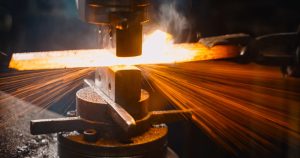Morgan’s early years
J. P. Morgan was born in Hartford, Connecticut, and he preferred to be known as Pierpont. Pierpont went through school studying varied disciplines due to his father’s desires. In 1848, Pierpont attended Hartford Public School, and then transferred to the Episcopal Academy where he boarded with the principal. In 1851, he passed the entrance exam for the English High School of Boston, which specialized in mathematics.
Building the Morgan empire
In 1852, Pierpont was hit with illness, which was to be a common thread in his life. He contracted rheumatic fever, which left him in such horrendous pain he couldn’t walk. He convalesced for a year before returning to high school to resume his studies. He learned multiple languages and gained several degrees. In 1857, he entered the banking industry at his father’s London branch, and then moved to New York City the next year. In 1871, he partnered with the Drexels from Philadelphia in order to form Drexel, Morgan & Company. After the death of Anthony Drexel in 1893, the company was renamed J. P. Morgan & Company in 1895. Fifteen years later, he created Chase Manhattan Bank, which was one of the most powerful banking institutions of the era.
Morgan’s Civil War contributions
During the Civil War, Morgan financed the purchase of antiquated rifles that were sold to the army for $3.50 each. His partner re-machined them and sold them back to the army for $22.00 each. The guns became a source of negative press as they were all defective and had a habit of blowing the thumbs off those using them. Morgan himself avoided military service by paying $300.00 for a substitute.
Morganization
Morgan engaged in many dynamic financial battles such as acquiring control of the Albany and Susquehanna Railroad. In 1889 and 1890, Morgan was instrumental in helping all of the railroads comply with the Interstate Commerce Act of 1887. Morgan’s knack for turning around troubled businesses earned the name of Morganization for what he did.



